Abstract
The mechanism of action of cinodine, a glycocinnamoylspermidine antibiotic, was investigated. Upon addition of cinodine to growing cultures of Escherichia coli, a rapid decline in viable cell numbers was observed. Culture turbidity continued to increase for a short period before plateauing. Microscopic examination indicated that the antibiotic-treated cells continued to elongate with subsequent formation of serpentine-like structures. Radioisotopic-labeling studies of E. coli demonstrated that deoxyribonucleic acid (DNA) synthesis was immediately and irreversibly inhibited upon addition of cinodine. Ribonucleic acid synthesis was reduced after a significant delay, whereas protein synthesis remained unaffected. There was a minor degree of inhibition of incorporation of radiolabeled diaminopimelic acid into cell wall material. Cinodine likewise inhibited bacteriophage T7 DNA synthesis in infected E. coli cells. After inhibition of E. coli DNA synthesis by cinodine, intracellular DNA degradation was observed. Equilibrium dialysis studies demonstrated that the drug physically bound to DNA. These data indicate that cinodine functions as a potent irreversible inhibitor of bacterial and phage DNA synthesis.
Full text
PDF
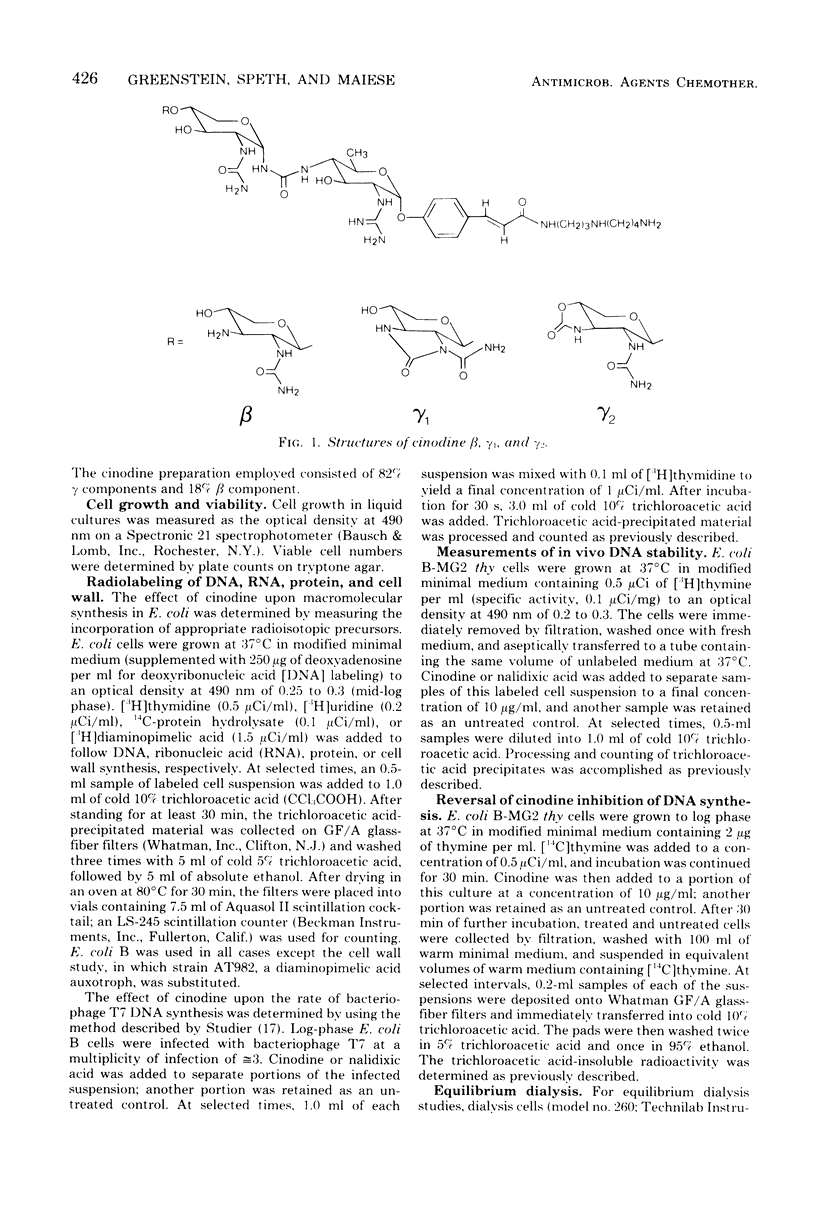

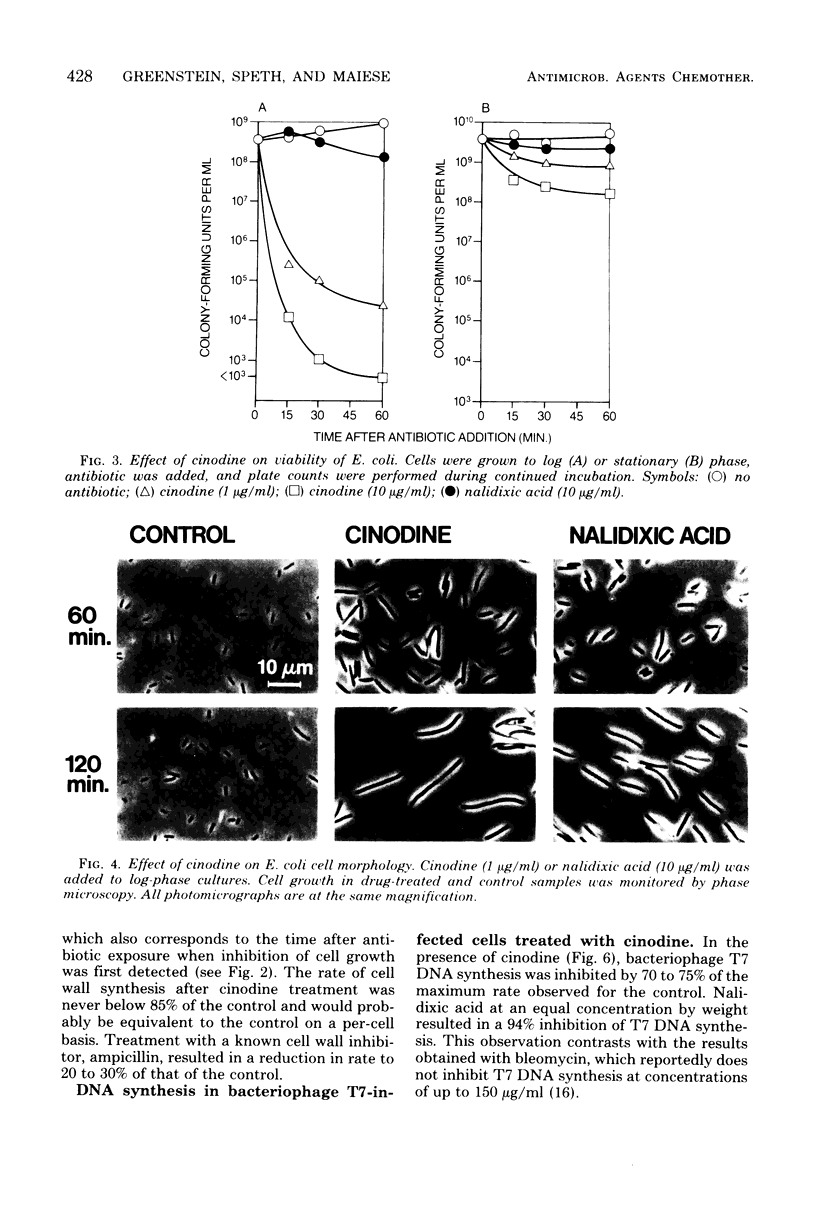
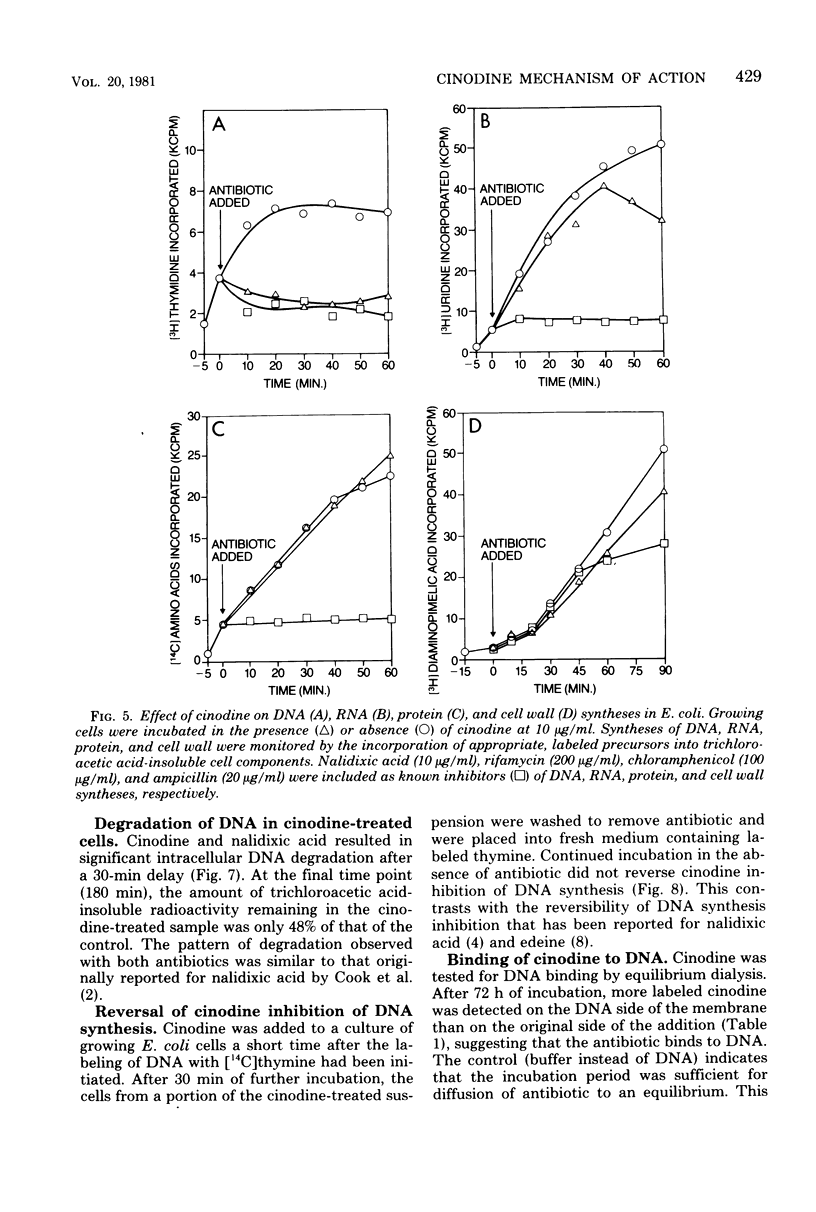

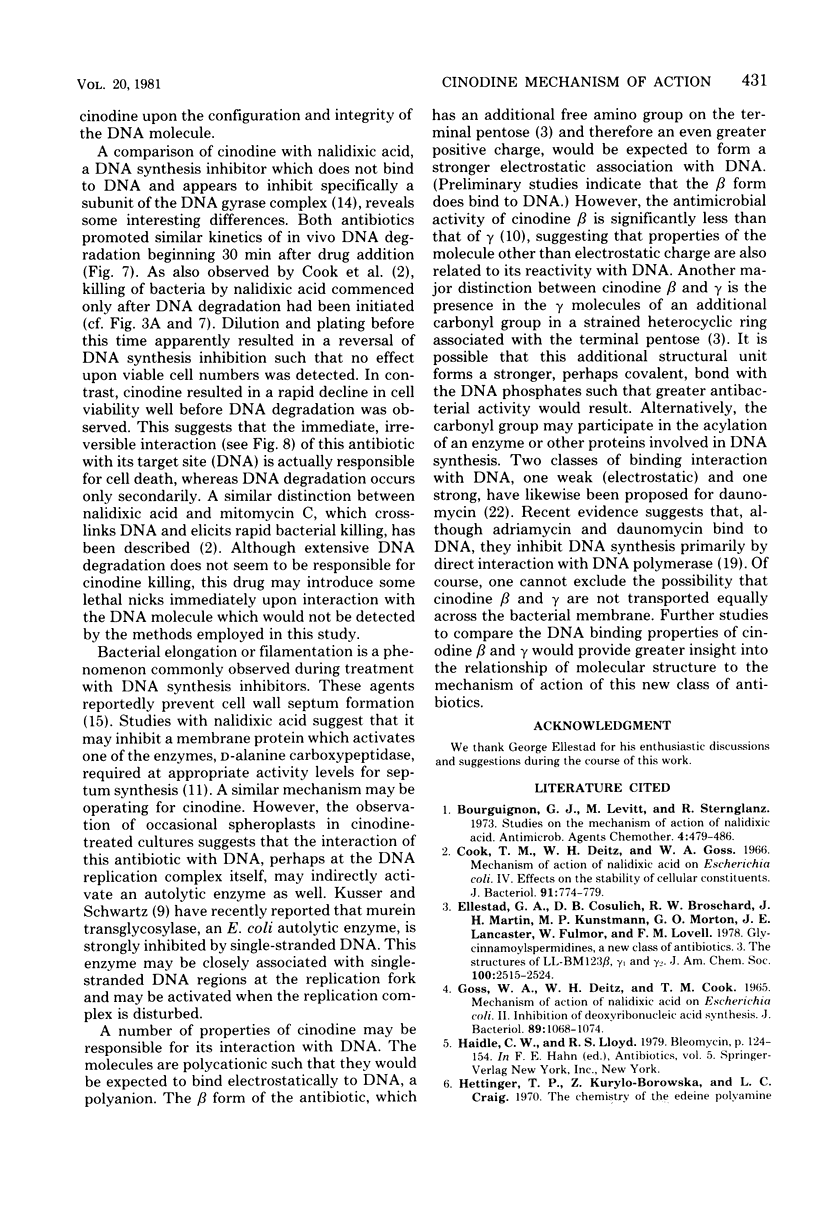
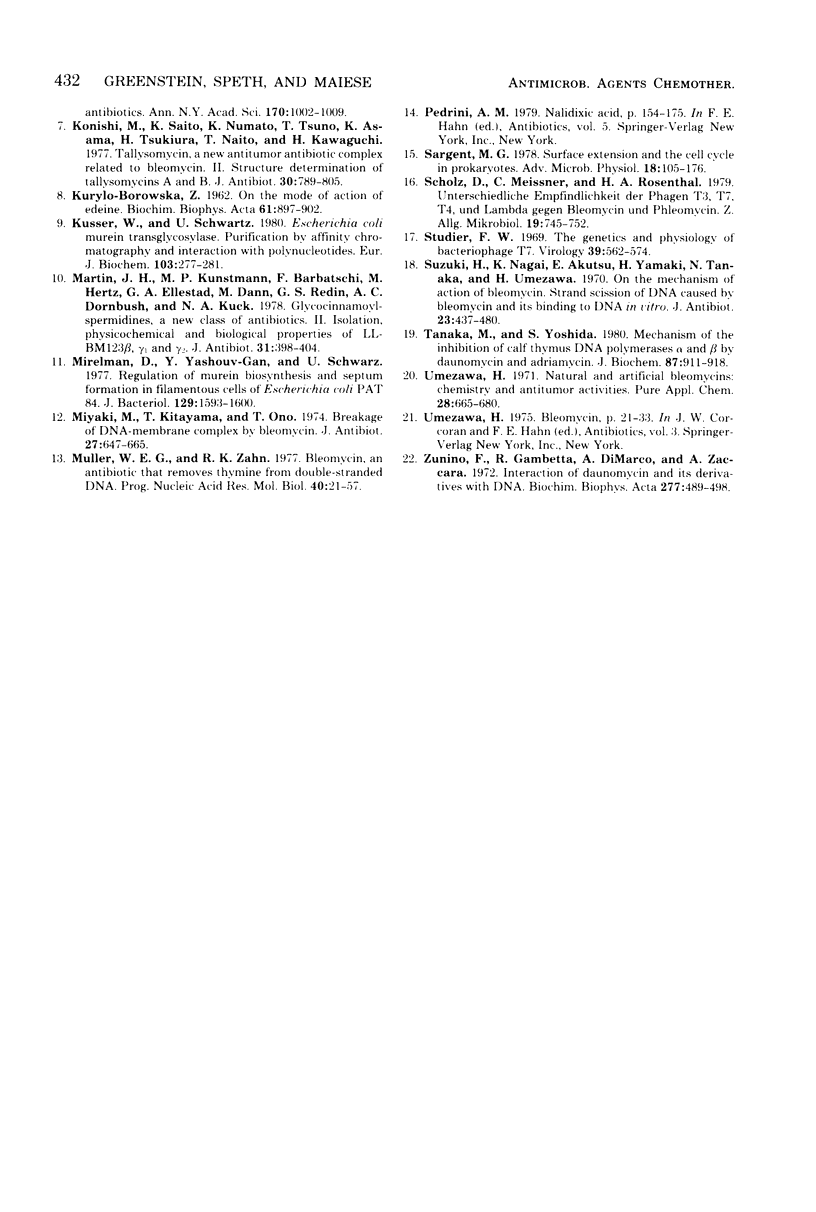
Images in this article
Selected References
These references are in PubMed. This may not be the complete list of references from this article.
- Bourguignon G. J., Levitt M., Sternglanz R. Studies on the mechanism of action of nalidixic acid. Antimicrob Agents Chemother. 1973 Oct;4(4):479–486. doi: 10.1128/aac.4.4.479. [DOI] [PMC free article] [PubMed] [Google Scholar]
- Cook T. M., Deitz W. H., Goss W. A. Mechanism of action of nalidixic acid on Escherichia coli. IV. Effects on the stability of cellular constituents. J Bacteriol. 1966 Feb;91(2):774–779. doi: 10.1128/jb.91.2.774-779.1966. [DOI] [PMC free article] [PubMed] [Google Scholar]
- GOSS W. A., DEITZ W. H., COOK T. M. MECHANISM OF ACTION OF NALIDIXIC ACID ON ESCHERICHIA COLI.II. INHIBITION OF DEOXYRIBONUCLEIC ACID SYNTHESIS. J Bacteriol. 1965 Apr;89:1068–1074. doi: 10.1128/jb.89.4.1068-1074.1965. [DOI] [PMC free article] [PubMed] [Google Scholar]
- Konishi M., Saito K., Numata K., Tsuno T., Asama K. Tallysomycin, a new antitumor antibiotic complex related to bleomycin. II. Structure determination of tallysomycins A and B. J Antibiot (Tokyo) 1977 Oct;30(10):789–805. doi: 10.7164/antibiotics.30.789. [DOI] [PubMed] [Google Scholar]
- Martin J. H., Kunstmann M. P., Barbatschi F., Hertz M., Ellestad G. A., Dann M., Redin G. S., Dornbush A. C., Kuck N. A. Glycocinnamoylspermidines, a new class of antibiotics. II. Isolation, physiocochemical and biological properties of LL-BM123beta, gamma1 and gamma2. J Antibiot (Tokyo) 1978 May;31(5):398–404. doi: 10.7164/antibiotics.31.398. [DOI] [PubMed] [Google Scholar]
- Mirelman D., Yashouv-Gan Y., Schwarz U. Regulation of murein biosynthesis and septum formation in filamentous cells of Escherichia coli PAT 84. J Bacteriol. 1977 Mar;129(3):1593–1600. doi: 10.1128/jb.129.3.1593-1600.1977. [DOI] [PMC free article] [PubMed] [Google Scholar]
- Miyaki M., Kitayama T., Ono T. Breakage of DNA-membrane complex by bleomycin. J Antibiot (Tokyo) 1974 Sep;27(9):647–655. doi: 10.7164/antibiotics.27.647. [DOI] [PubMed] [Google Scholar]
- Sargent M. G. Surface extension and the cell cycle in prokaryotes. Adv Microb Physiol. 1978;18:105–176. doi: 10.1016/s0065-2911(08)60416-6. [DOI] [PubMed] [Google Scholar]
- Studier F. W. The genetics and physiology of bacteriophage T7. Virology. 1969 Nov;39(3):562–574. doi: 10.1016/0042-6822(69)90104-4. [DOI] [PubMed] [Google Scholar]
- Suzuki H., Nagai K., Akutsu E., Yamaki H., Tanaka N. On the mechanism of action of bleomycin. Strand scission of DNA caused by bleomycin and its binding to DNA in vitro. J Antibiot (Tokyo) 1970 Oct;23(10):473–480. [PubMed] [Google Scholar]
- Tanaka M., Yoshida S. Mechanism of the inhibition of calf thymus DNA polymerases alpha and beta by daunomycin and adriamycin. J Biochem. 1980 Mar;87(3):911–918. doi: 10.1093/oxfordjournals.jbchem.a132821. [DOI] [PubMed] [Google Scholar]
- Umezawa H. Natural and artificial bleomycins: chemistry and antitumor activities. Pure Appl Chem. 1971;28(4):665–680. doi: 10.1351/pac197128040665. [DOI] [PubMed] [Google Scholar]
- Zunino F., Gambetta R., Di Marco A., Zaccara A. Interaction of daunomycin and its derivatives with DNA. Biochim Biophys Acta. 1972 Sep 14;277(3):489–498. doi: 10.1016/0005-2787(72)90092-5. [DOI] [PubMed] [Google Scholar]



